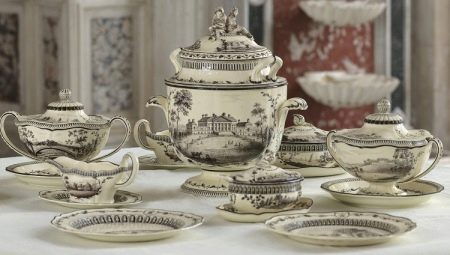Each exhibit of the Hermitage is a true masterpiece and has its own, often unusual, history. The service with a green frog has not only an intriguing name, but also serves as a unique artifact that combines the history of two countries: Russia and England, and is also considered the founder of a whole trend in the art of porcelain production.
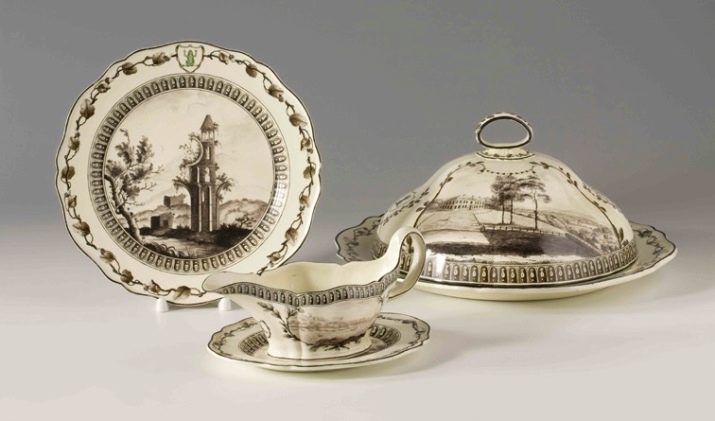
Unusual order
The famous English faience producer Josiah Wedgwood, whose services were proudly called “royal goods”, received a complex and very responsible order in 1773. Its uniqueness consisted in the fact that it was necessary to make a large ceremonial service for 52 persons, the painting of which would reproduce with topographic accuracy the views of England, Scotland and Wales. More than 1220 landscapes were to be painted, and not one of them was to be repeated. The service was truly huge: about 950 items (the exact figure is unknown, since the sources indicate a different amount).
The cost of the service was also more than impressive. The invoices indicated 14,600 rubles 43 kopecks. The amount for those times is unthinkable. Even the architect of the Tauride Palace Starov received much less for his work: 9600 rubles. The emblem of the service was to be a green frog on a stamp. Subsequently, it was called: "Service with a green frog."
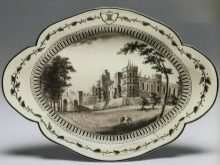
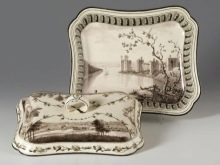
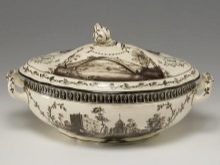
Who is the customer?
Huge responsibility was imposed by the identity of the customer. She was the Russian Empress Catherine II. For Wedgwood, the perfect execution of the work was a matter of honor, it was very difficult to receive such an order, and, in addition, his creation had to compete with the service sent to the Empress by the Prussian King Frederick.
The service was intended for the Gothic castle under construction.The area where it was built was called Kikeriki, which in translation from Finnish means "frog swamp." Therefore, the usual green frog became the emblem of the service.
The castle was created to celebrate significant events, amusements and recreation of the empress and was built on the lands that had departed from Russia after the Northern War. It was in this castle in the Round Hall that the heroes of the war of 1812 were awarded: Kutuzov, Suvorov. Here Catherine II met with the St. George Knights.
The foundation of the castle was laid in 1774. By 1777, the complex was erected. It was built in the neo-Gothic style, which came to Russia from England. This is practically the first neo-Gothic architectural ensemble in the vicinity of St. Petersburg. The Empress was fascinated by English architecture and landscape culture., as reported in a letter to Voltaire in the summer of 1772.
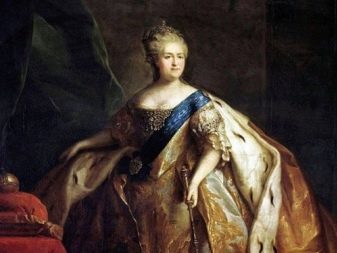
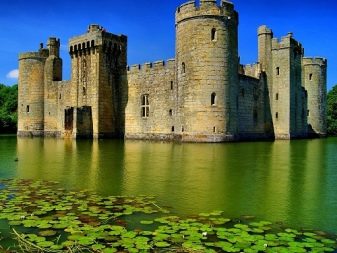
Medieval Gothic castles, churches, chapels in one form or another were an indispensable element of the classic English landscape. It could be either genuine ruins of Gothic buildings, or new buildings erected according to Gothic canons. The traditions of Russian architecture were very different from English, so Russian neo-Gothic architecture of the XVIII century is pretty much dependent on Russian classicism. This was reflected in the style of the Kekerekeksinensky palace complex.
English types were to decorate the ceremonial palace service. Thomas Bentley, Wedgwood's business partner, compiled a catalog for the empress with names of all kinds, among which were urban and rural landscapes, natural landscapes, castles, abbeys, manors, country mansions. That is why the service has not only artistic, but also historical value. It recreated a unique and majestic panorama of Great Britain of the 18th century, which has significantly changed at the present time.
And many monuments of architecture and landscape culture have been completely lost.

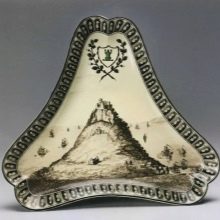
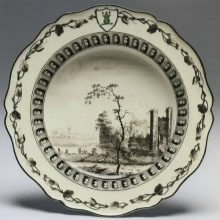
A masterpiece of art of ceramics
It was assumed that all the landscapes decorating the service will be executed from nature. However, it turned out that it would take a very long time, therefore engravings, drawings and watercolors began to be used as sources. For this purpose, letters were sent to the owners of estates and estates asking them to send available engravings and paintings with the views of their possessions. The letters indicated that the catalog with the names of the hosts would be presented to the Russian Empress. The owners ’nobility did not matter, taking into account how picturesque the landscape was and its relevance to the product concept.
The masters painting the service items most often reproduced the original with photographic accuracy, but in some cases the artist’s imagination surrounded the real historical building with a fictional landscape made in the traditions of classicism. Wedgwood perfected the traditional ceramic composition of English cream-colored faience. The new line-up was called the Queen's Faience in honor of Wedgwood's patroness Queen Charlotte.
A set with a green frog was made of this material.
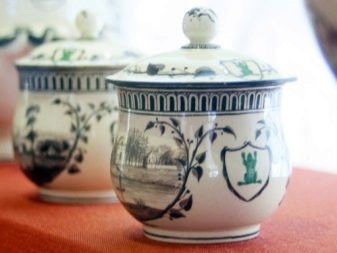

Products were formed and burned at the Staffordshire factory Etruria, and painting was done in a painting workshop in Chelsea. We painted a service for more than 30 masters, each of whom performed his part of the work. For example, a green frog on all subjects was prescribed by one master.
The “royal form” was the basis of the service item formso named because Wedgwood created a service for George III according to this model. This form was modified and later received the name "Catherine." She was distinguished by strict flowing graceful contours. The frog service was intended for both dining and dessert serving.
Dining utensils were framed by a border of oak branches, and dessert - of ivy branches.
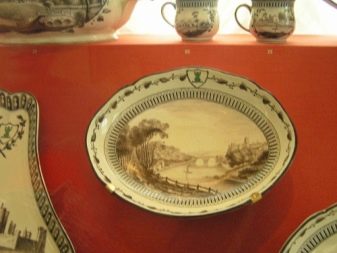
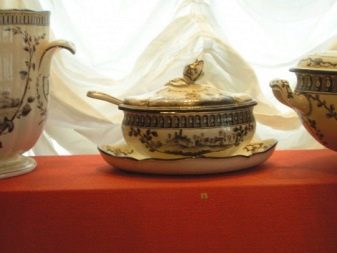
The set consisted of many plates of different sizes, dishes for game, fruits and vegetables, salad bowls, tureens, gravy boats, bowls, vases and much more.Some products were of rather complicated design, including several parts. For example, ice cream makers consisted of an ice compartment with a lid, an ice cream mold and a voluminous body with a dense top lid.
Painted dishes in warm olive-brown tones over a soft “creamy” background, on every subject there is only one bright spot: a symbolic little green frog. A triangular shield with her image crowns every ornament.
Carefully painted landscapes amaze with grace and aristocracy.
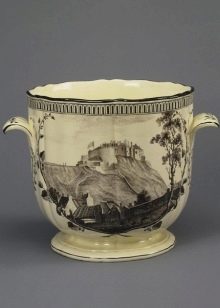
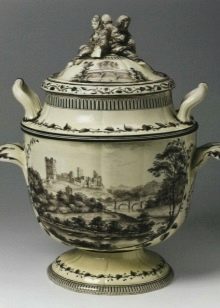
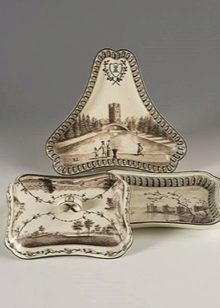
Frog Service History
Even during the creation of the service items were exhibited in a specially hired house for this at Portland House in London, so that the British could admire them before being sent to Russia. The exhibition was so popular that it lasted longer than the allotted time. This brought additional fame to Wedgwood and Sons. The turnover of the manufactory has increased significantly, the “Catherine's” line of services was opened.
Catherine expressed her gratitude to Wedgwood and manufacturers through the ambassador in London. In Russia, the service was used at the most solemn receptions. For example, he served a table to celebrate the decade of victory in the Chesme Bay of the Aegean Sea. In honor of this, the Kekerekeksinsky palace itself became known as Chesmensky. This reception was attended incognito by the Roman Emperor Joseph II under the name of Count Falkenstein.
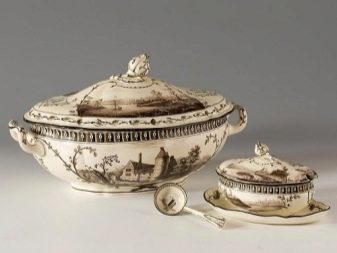
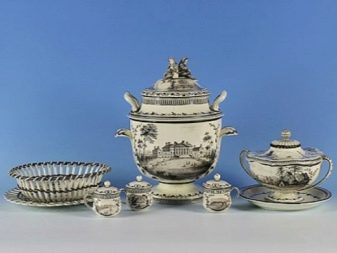
A festive dinner in honor of the consecration of the place under the Church of St. John the Baptist, where King of Sweden Gustav III was present under the name of the Count of Gotland, was also decorated with the Green Frog. In the XIX century, the imperial service ordered for the Chesme Palace was lost, and it was believed that it was irrevocable. But the English researcher Ulliamson insisted on a thorough search, and at the beginning of the 20th century, a service packed in boxes was found in the cellars of the English Palace in Peterhof.
In 1912, Wedgwood's product was exhibited at the Academy of Arts at the anniversary exhibition of the Wedgwood factory, and then solemnly transferred to the Hermitage. To date, 700 items from the Green Frog have been preserved. In addition to the Hermitage, some of them are represented in the collections of Peterhof and Cottage and are often shown at various exhibitions.
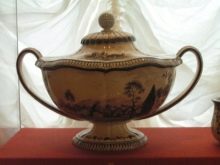
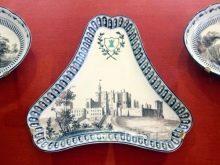
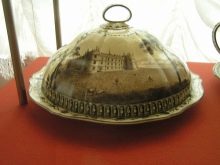
Overview of a service with a green frog you can see below.
